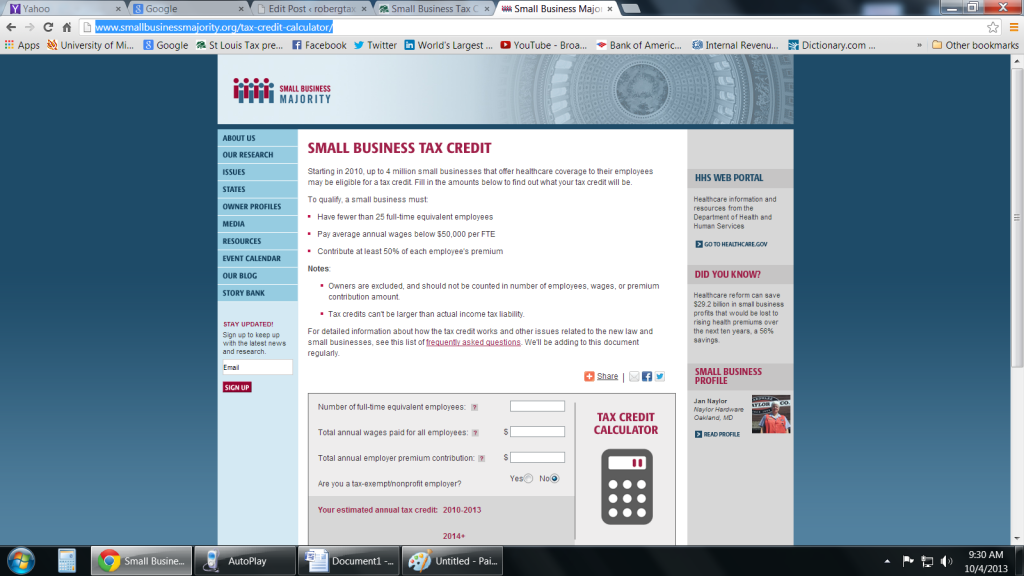
Photo by Tom Hart at Flickr.com
Recently Congress delayed the requirement of businesses with over 50 employees to provide health insurance to their workers. They were supposed to start in 2014, but now that’s been extended to 2015. Congress did not extend the requirement of individuals to have insurance in 2014 though.
If you don’t already have health insurance coverage, what are you supposed to do? Good question. This isn’t something you’re just going to figure out in two minutes. I don’t have any easy answers for you. But I can help you get some of the answers you need to make your decisions.
What’s better, buying insurance or paying the penalty? Let’s be real, having insurance is better than not having insurance–but what’s it going to cost? You can’t buy insurance if you can’t pay for it.
First, let’s figure the cost of the insurance. Right now, the exchanges aren’t ready yet, but if you’re reading this after October 1, 2013, you should be able to go straight to the exchange and get solid dollar figures: https://www.healthcare.gov/
But in the meantime, I’ve found that the subsidy calculator from the Kaiser Family Foundation to be really helpful. Using their tool, you plug in your family income, ages, whether you smoke or not, and it will spit out what your insurance premium would be if you paid the full premium, and also how much of a subsidy you’d qualify for. Now remember, this calculator is based on averages from around the country. You may live in a more expensive or less expensive area. But at least this will give you some kind of clue as to what kind of money we’re talking about.
For example: let’s say we have a young couple with a baby. They don’t make very much, just $30,000 together for the year. They don’t smoke. According to the calculator–if they had to pay full price for their insurance, they’d pay $8,792 for a “silver plan” health insurance per year. Yowza! On a $30,000 a year income, there’s no way a family could afford that. But, because their income is low, they’d qualify for a subsidy. With the subsidy, they’d only pay $1,250 a year for that health insurance. That’s still kind of high when you only make $30,000 a year though. But if they chose the “bronze plan” their subsidy would completely cover their insurance and they’d be paying zero dollars to have health insurance. Zero’s a price I think they can live with.
What’s this “bronze” and “silver” stuff? The health plans are coded, bronze, silver, gold, and platinum. Bronze is the least comprehensive, platinum being the most. With a bronze plan, you pay 40% of your own costs, silver; 30%, gold 20% and platinum 10%. Basically, the more you pay for the premium, the lower your co-pay is.
In our earlier example, the couple wound up qualifying for free health insurance. What would happen if our couple made $50,000 a year instead? Same circumstances so the full premium would stay the same at $8,792. But, their subsidy would go down to $4,679 and their out of pocket would be $4,112. Or they could enroll in a bronze plan which would have them paying $2,607 after subsidies.
So the question becomes, do you buy the health insurance or do you pay the penalty for not having it? If they can’t afford the $2,607 how much is the penalty? For a married couple, (I’m using 2012 numbers because I don’t have 2014 yet), to compute the penalty for not having health insurance you would take their income (which is $50,000 in this example) and subtract the filing threshold (which for a married couple is $19,500) and then multiply by 1%. Like this:
$50,000 – $19,500 = $30,500 (they call this excess household income)
Then take 1% times the excess household income: $30,500 x .01 = $305
So for this couple, paying the penalty for not having insurance in 2014 will cost less than the insurance premium. I’m not saying they shouldn’t buy the insurance–I think insurance is a good thing. But you need to know what the options are. What it costs to have insurance, and what it costs to go without.
Take a look at the numbers for your family. Go to the Henry J Kaiser Family foundation website and check out their subsidy calculator. Here’s the link: http://kff.org/interactive/subsidy-calculator/
If you want to read more about penalties for not having insurance, check out my other blog post: http://robergtaxsolutions.com/2012/07/obamacare-what-you-need-to-know-part-1/
For more information about the Affordable Care Act, here’s a good, easy to understand video: http://www.youtube.com/watch?v=JZkk6ueZt-U


